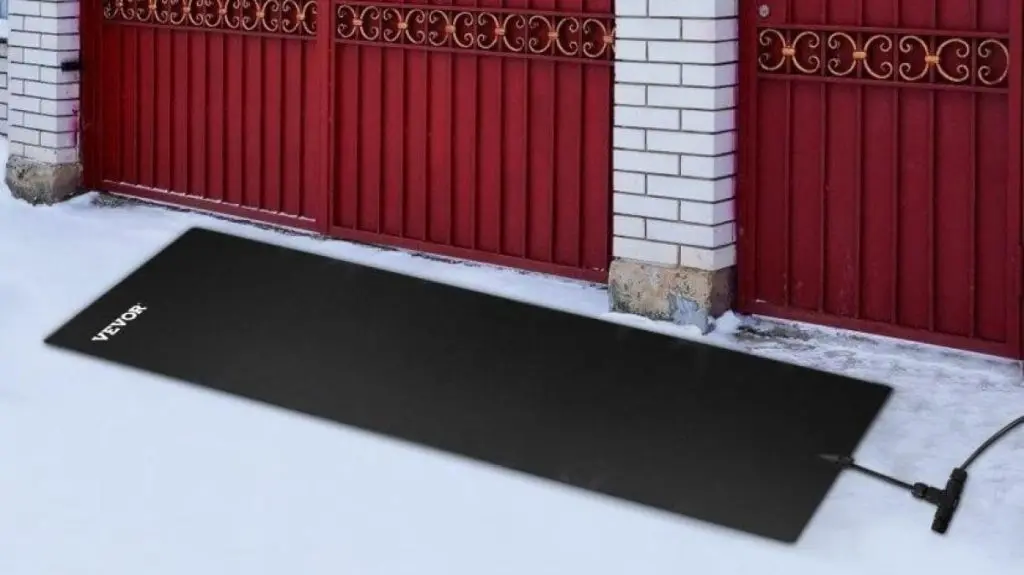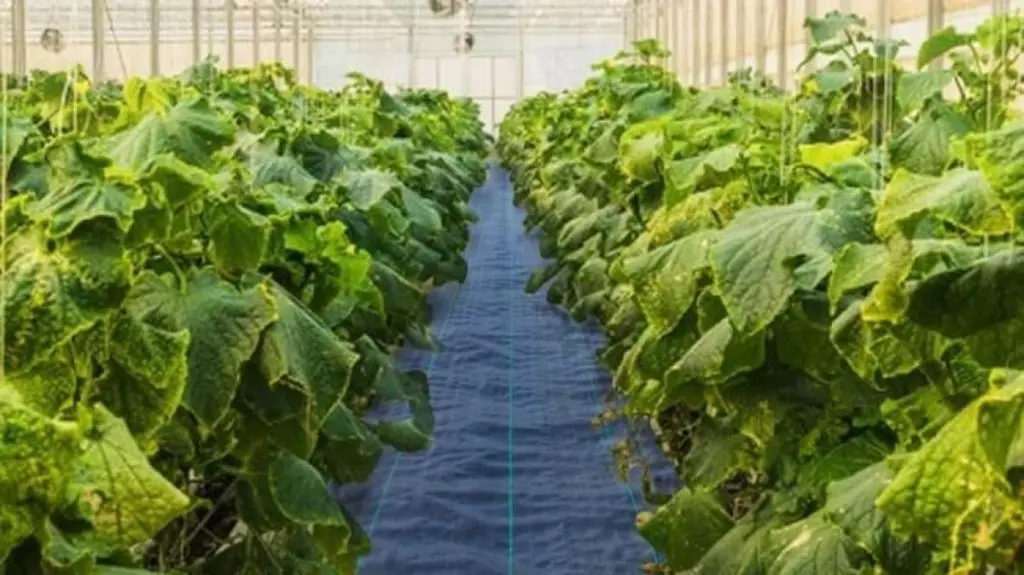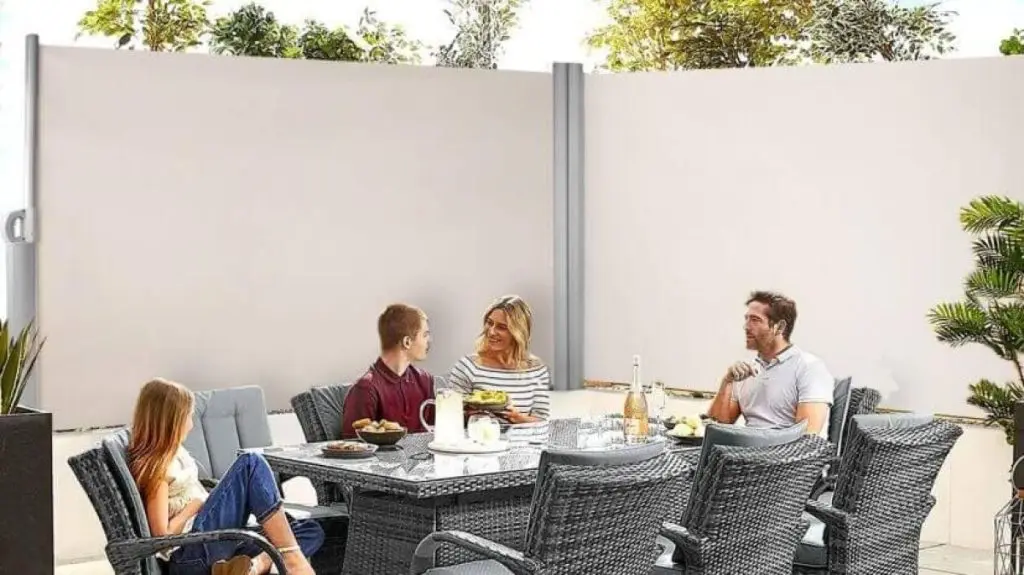Have you ever wondered, “Can perennials grow out of landscape fabrics?” Does it bother you because you want a beautiful green space but don’t want to risk ruining your hard work? You’re in luck because there’s a long-lasting solution!
VEVOR heavy-duty weed barrier landscape fabric allows your perennials to grow without fearing suffocation or, worse, unhealthy soil.
Because fabric planting is a delicate art, we bring you this guide filled with tips and information on growing perennials through landscape fabric. It’s easier than you think but requires diligence and dedication on your part.
Let’s get to the details.
Table of contents
What are Perennials?

Lily Flower
Plants that survive for over two years and more are perennials. They’re very diverse and include herbs, vegetables, flowers, and shrubs. Because of this wide range of options, perennials are one of the most natural garden beautifiers.
Beyond their beauty, perennials add nutrients that nourish the soil, especially during the rainy season or spring. Already intrigued? There’s more!
What’s the Difference Between Perennials and Annuals?
Before discussing the benefits of using landscape fabric on your perennials and maintenance tips, let’s compare them to the other common type of plant — annuals.
Annuals only survive for a year, so you must harvest within 12 months of planting. Watermelon, peas, wheat, corn, and rice are some of the most popular types of annuals. They grow, bear fruit, and die in one planting year.
To get the best out of your annual plants, you must target specific seasons like spring and fall, where it rains heavily.
Meanwhile, you can plant a perennial anytime, and it’ll bloom.
Pros of Using a Landscape Fabric

So, you’ve heard a lot about landscape fabrics but don’t understand why people use them. That’s fine and normal. Here’s a summary of the benefits you’ll get from using a fabric barrier.
- Protect the Soil from Harsh Weather: While your soil needs natural nutrients like sunlight, air, and water, it can be too much. Using a breathable landscape fabric like VEVOR’s woven heavy-duty weed barrier prevents scorched earth and light for potential weed growth. Instead, only the perennials would get their required sunlight and moisture.
- Secure your Mulch: You may think using mulch already does the job of keeping the soil from harsh weather, so why bother with a fabric landscape? But wouldn’t you rest better knowing your mulch won’t sink into the soil or move out of place? That’s what a VEVOR landscape material does. It keeps the mulch above ground while transferring its moisture to the roots of your perennial.
- Healthy Plant Growth: Because VEVOR woven landscape material has pre-cut holes, adding organic matter post-installation is easy. You can easily lift the flaps and add your manure or compost to nourish the perennials’ roots. It ensures you grow multiple perennials on one land without fear that they’ll fight for nutrients. Every plant gets its fair share, and zero weeds means less use of herbicides that will lower your soil’s quality.
- Organized Rows: Gardening is no longer messy when you install VEVOR heavy-duty weed barrier landscape fabric on your perennial beds. Since the fabric prevents weed growth, gardeners won’t spend time weeding. Meanwhile, your green space’s aerial view would be dreamy and aesthetically pleasing.
- Low-Cost Maintenance: A one-time fee of $44.99 – $108.99, depending on the size of your VEVOR weed barrier fabric, saves you the stress of heavy maintenance. That means you don’t have to hire a professional to weed your garden every month since the fabric keeps them out. You can easily clean the material and replace the mulch periodically.
Now that you know the benefits of using a landscape fabric over your perennial beds, do you still have questions? Are you asking, “Would my perennials grow out of a landscape fabric?”
Yes, but there’s a catch. Only certain perennials grow through landscape fabrics, and you must nurture them.
How to Install a Landscape Fabric for Perennials
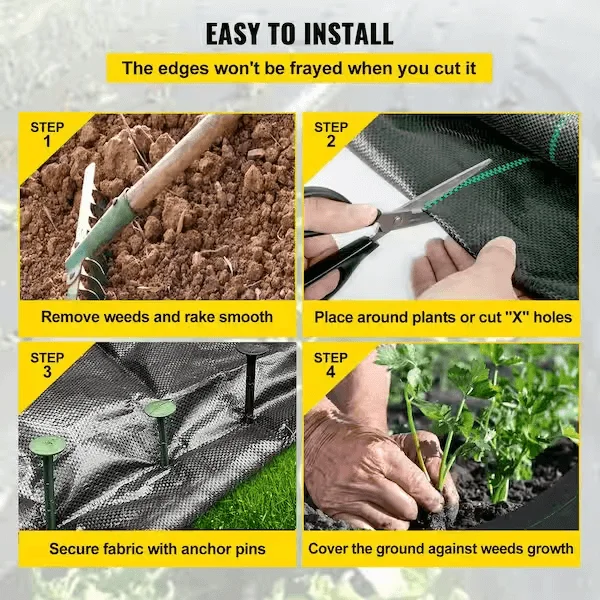
Before we continue, here’s a quick DIY instruction on installing landscape fabrics for perennials.
- Measure your land.
- Buy a landscape fabric a few inches (2” – 3”) wider and longer than the area when spread.
- Clear the debris.
- Level the soil.
- Treat the soil with compost, manure, and herbicides.
- Lay your landscape fabric.
- Cut deep and wide planting holes in an X shape.
- Plant your perennials.
- Add mulch.
And you’re good to go. Now, you’ll learn about the perennials you can plant on landscape fabrics. Then, we’ll share tips for healthy plant growth.
Which Perennials Can Grow Through Landscape Fabric?
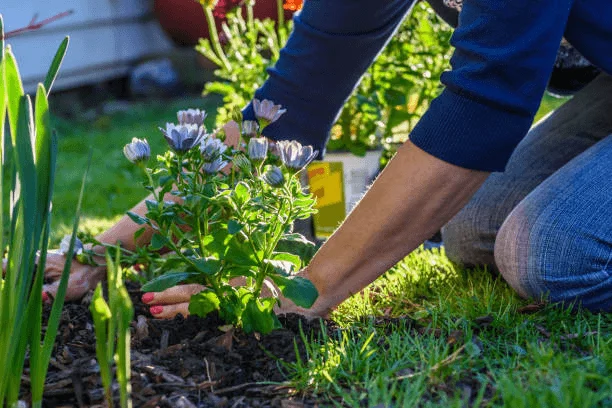
Perennials are some of the most adaptable plants in existence, which is why their life cycle isn’t complete in two years or less. Even so, that’s no reason to put them through the wringer and force them to grow in harsh conditions.
With your landscape fabric, only the resilient plants will survive and sprout through VEVOR’s non-woven geotextile weed barrier fabric.
Will bulbs grow through landscape fabric? The answer is maybe. The landscape material’s strength weighs on the bulb and stunts its potential sprout. But, if you have no choice, then it’s best to follow the tips for healthy plant growth below.
Common perennial bulbs include Iris, Dahlia, Daffodil for flowers and Onion and Garlic for vegetables. Before then, see the table below for an overview of perennials that can grow through landscape fabric.
| Perennial Herbs | Perennial Flowers | Perennial Fruits | Perennial Vegetables |
| Chives, Lavender, Mint, Oregano, Thyme, Tobacco, and Sage | Daisies, Dahlia, Lupin, Poppies, and Susan’s Will | Apple, Berries (Blackberry, Strawberry, Blueberry, and Raspberry), Plum, and Currants | Kale, Leek, Sweet Potato, Artichoke, and Rhubarb |
You can’t have them all unless you run a greenhouse with a controlled temperature system. Choosing your perennials based on your climate zone is best to get excellent results. Want to know how to ensure that? Keep reading.
Tips for Healthy Plant Growth with a Landscape Fabric
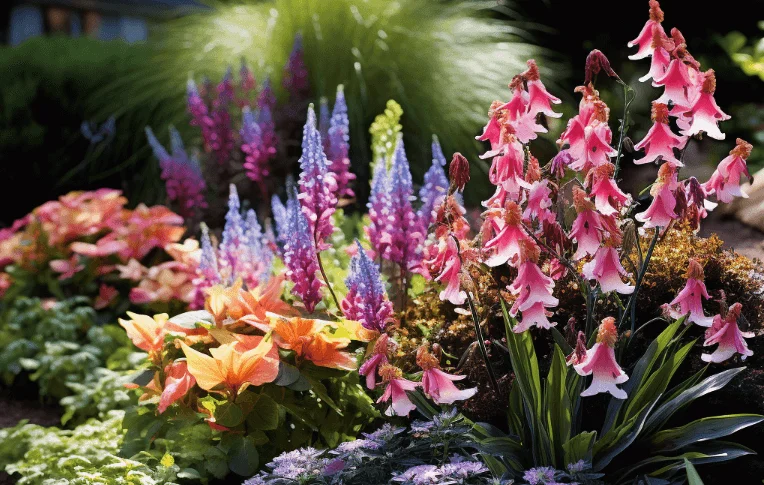
Here are some more tips for healthy perennial plant growth using a landscape fabric.
- Quality of Soil: As part of your first step in installing your VEVOR landscape fabric over your perennial bed, don’t forget to prime your soil. Add compost or manure for nutrition and create a proper irrigation system for drainage. You can also use organic soil food to restore its health before planting perennials because once your fabric goes on, it’s trickier to navigate the soil underneath.
- Plant Depth: Perennials must take root deep in the soil for the healthiest fruits to sprout. After preparing your soil, ensure it’s deep enough to accommodate your perennials before laying your landscape fabric. Choose plants with fibrous roots over tap roots so they can spread and connect with nutrients underground.
- Lighting Conditions: How much sunlight does your garden get? Because there’s no blanket rule to planting perennials. Some require as much sunlight as possible, while others thrive in shades. Luckily, VEVOR has two types of landscape fabric to suit both needs. You should get the woven weed barrier material for perennials like lavender, marigolds, peonies, and daylilies that need sunlight. But for low-light perennials like begonia, columbine, hydrangeas, begonia, pears, and berries, the non-woven material works fine.
- Moisture Level: Like the lighting conditions, all perennials have unique moisture requirements. VEVOR woven landscape fabric is ideal for moisture-loving perennial flowers like Japanese primrose, calla lily, turtlehead, and Siberian iris. The non-woven type suits drought-tolerant perennial flowers like coneflower, Russian sage, Yarrow, and Lavender. For perennial fruits with low water needs, try Pineapple guava, Jujube, Dragonfruit, and Fig.
- Mulching: There are different types of mulch beyond the common grass. To retain moisture in your landscape fabric, use wood chips and clipped leaves; otherwise, pea gravels and tiny rocks would do just fine.
Maintaining Perennials Growing Through Landscape Fabric
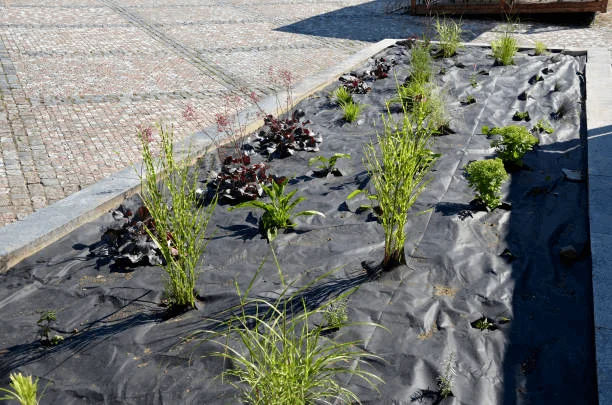
Creating space is your primary duty as a gardener, with perennials growing through landscape fabric. To avoid your plants struggling for nutrients, always dig a planting hole thrice the size of our perennial’s root. That way, when it’s time to spread, the roots have enough room.
Don’t overlook the tips for healthy plant growth, and if you did, please go back and check them. A few more pointers to help you include
- Pruning: Because VEVOR landscape fabric weed barrier keeps weeds out, it doesn’t mean you shouldn’t prune your perennials. Clean dead and sickly branches, wilted flowers, fallen seeds, and excess foliage periodically.
- Watch your Tools: In your eagerness to maintain your garden, please remember that specific tools are overkill for landscape fabric. Avoid heavy motor machinery like lawnmowers. Instead, activate your green thumb and return to the basics. Use trowels, rakes, and hoes to control the intensity and strength.
- Zero Water Pools: It’s easy for water to pool on VEVOR non-woven landscape fabric if the plants aren’t well spaced and because the material is tighter than the woven type. That’s why it’s best to create a working irrigation system before laying your weed barrier sheet.
Parting Note
By now, you have all the answers you seek about whether perennials grow through landscape fabrics. And if you got lost along the way, here’s your verdict — yes. But it’s not a cut-and-dry procedure.
You must be a hands-on gardener to ensure healthy perennial growth through a landscape fabric. Thorough preparation before installation is the key, and you’re already on the right track with this guide. Also, the kind of landscape fabric you use will hinder or encourage healthy perennial plant growth. So, choose a quality like VEVOR, which gives you options depending on the perennial you’re planting.


